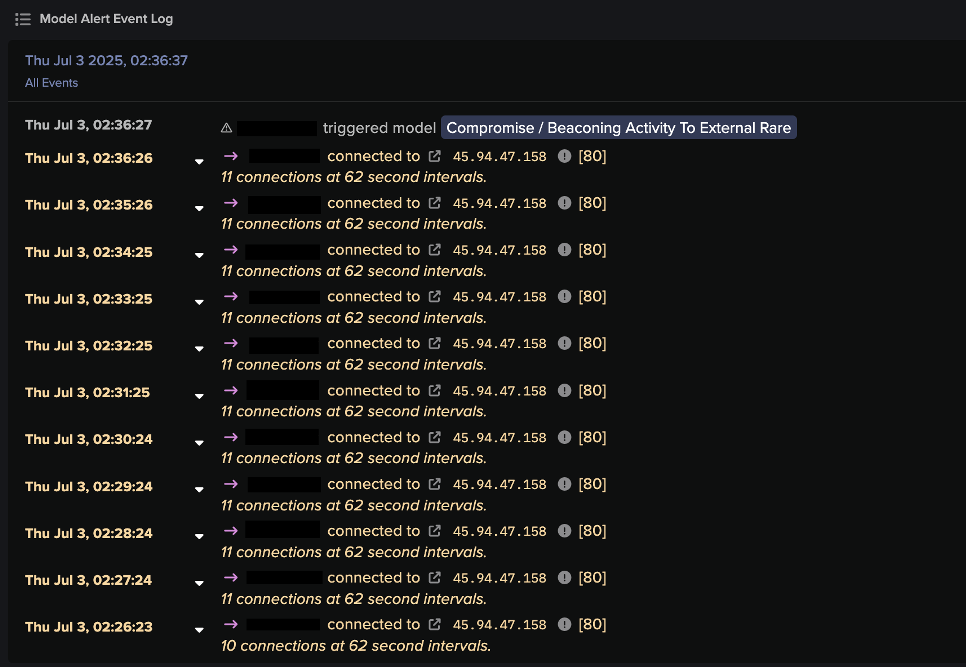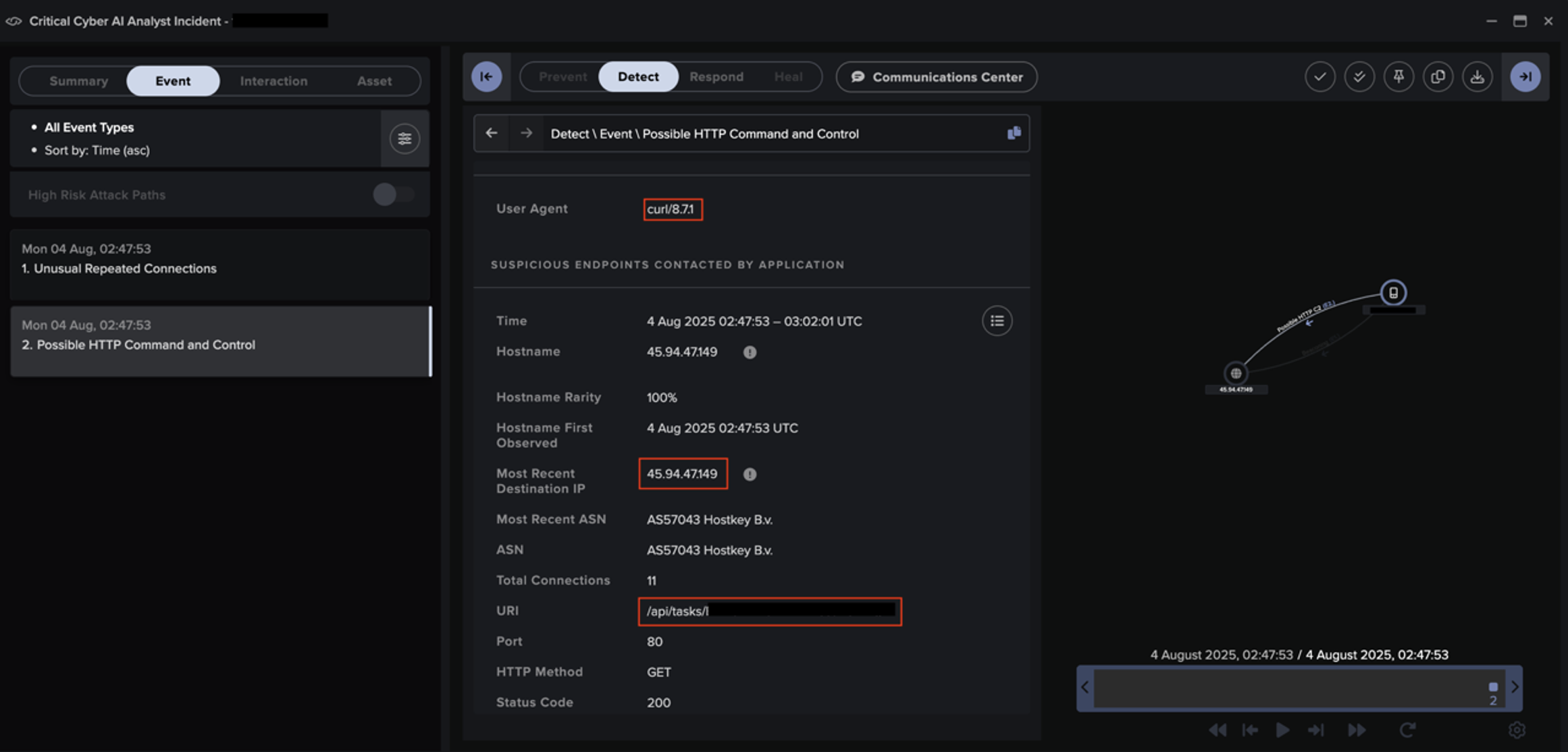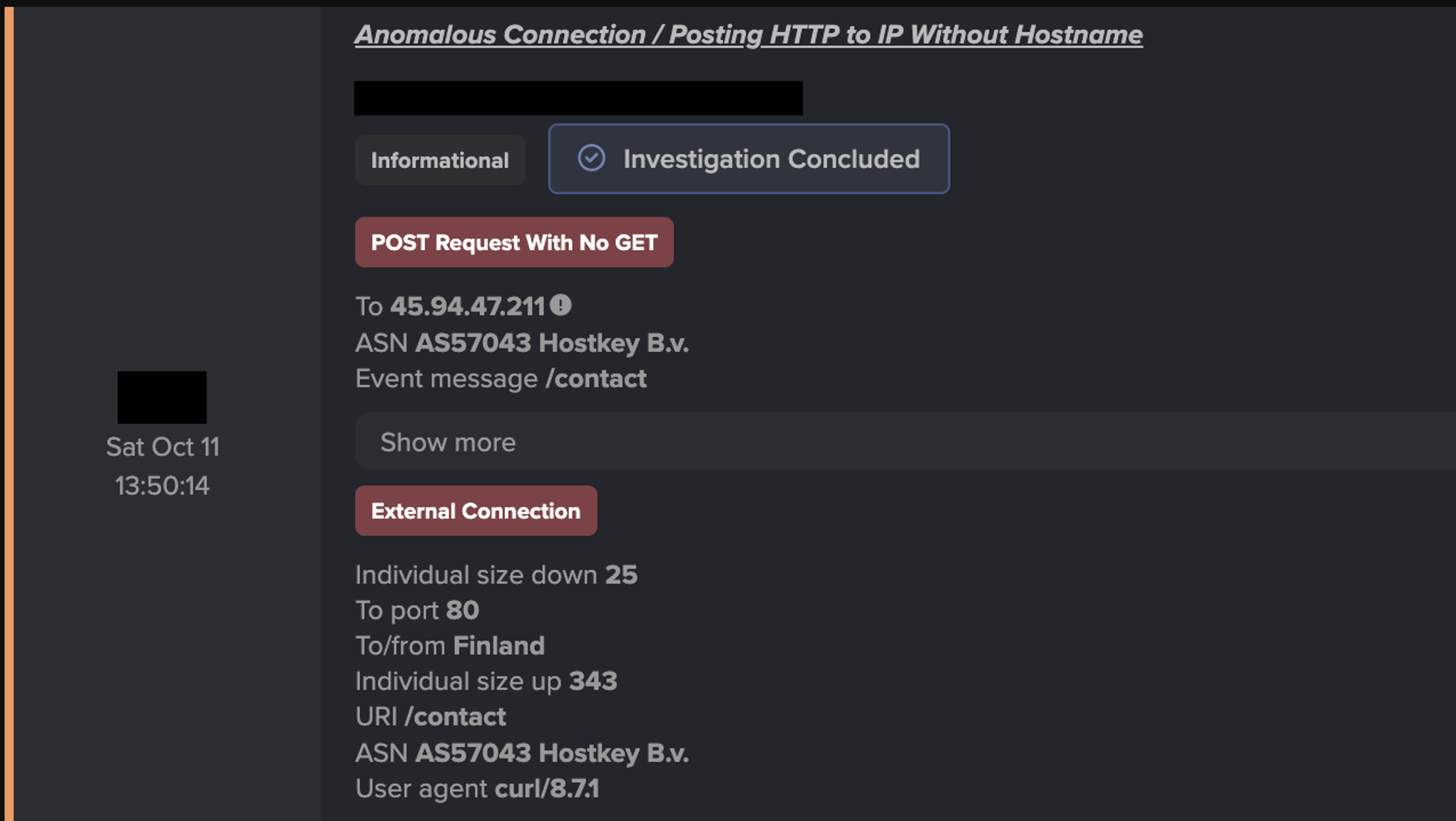NIS2 Background
17 October 2024 marked the deadline for European Union (EU) Member States to implement the NIS2 Directive into national law. The Directive aims to enhance the EU’s cybersecurity posture by establishing a high common level of cybersecurity for critical infrastructure and services. It builds on its predecessor, the 2018 NIS Directive, by expanding the number of sectors in scope, enforcing greater reporting requirements and encouraging Member States to ensure regulated organisations adopt ‘state-of-the-art' security measures to protect their networks, OT and IT systems.

The challenge of NIS2 & 'state-of-the-art'
Preamble (51) - "Member States should encourage the use of any innovative technology, including artificial intelligence, the use of which could improve the detection and prevention of cyberattacks, enabling resources to be diverted towards cyberattacks more effectively."
Article 21 - calls on Member States to ensure that essential and important entities “take appropriate and proportionate” cyber security measures, and that they do so by “taking into account the state-of-the-art and, where applicable, relevant European and international standards, as well as the cost of implementation.”
Regulatory expectations and ambiguity of NIS2
While organisations in scope can rely on technical guidance provided by ENISA1 , the EU’s agency for cybersecurity, or individual guidelines provided by Member States or Public-Private Partnerships where they have been published,2 the mention of ‘state-of-the-art' remains up to interpretation in most Member States. The use of the phrase implies that cybersecurity measures must evolve continuously to keep pace with emerging threats and technological advancements without specifying what ‘state-of-the-art’ actually means for a given context and risk.3
This ambiguity makes it difficult for organisations to determine what constitutes compliance at any given time and could lead to potential inconsistencies in implementation and enforcement. Moreover, the rapid pace of technological change means that what is considered "state-of-the-art" today will become outdated, further complicating compliance efforts.
However, this is not unique to NIS regulation. As EU scholars have noted, while “state-of-the-art" is widely referred to in legal text relating to technology, there is no standardised legal definition of what it actually constitutes.4
Defining state-of-the-art cybersecurity
In this blog, we outline technical considerations for state-of-the-art cybersecurity. We draw from expertise within our own business and in academia as well as guidelines and security standards set by national agencies, such as Germany’s Federal Office for Information Security (BSI) or Spain’s National Security Framework (ENS), to put forward five criteria to define state-of-the-art cybersecurity.
The five core criteria include:
- Continuous monitoring
- Incident correlation
- Detection of anomalous activity
- Autonomous response
- Proactive cyber resilience
These principles build on long-standing security considerations, such as business continuity, vulnerability management and basic security hygiene practices.
Although these considerations are written in the context of the NIS2 Directive, they are likely to also be relevant for other jurisdictions. We hope these criteria help organisations understand how to best meet their responsibilities under the NIS2 Directive and assist Competent Authorities in defining compliance expectations for the organisations they regulate.
Ultimately, adopting state-of-the-art cyber defences is crucial for ensuring that organisations are equipped with the best tools to combat new and fast-growing threats. Leading technical authorities, such as the UK National Cyber Security Centre (NCSC), recognise that adoption of AI-powered cyber defences will offset the increased volume and impact of AI on cyber threats.5
State of the art cybersecurity in the context of NIS2
1. Continuous monitoring
Continuous monitoring is required to protect an increasingly complex attack surface from attackers.
First, organisations' attack surfaces have expanded following the widespread adoption of hybrid or cloud infrastructures and the increased adoption of connected Internet of Things (IoT) devices.6 This exponential growth creates a complex digital environment for organisations, making it difficult for security teams to track all internet-facing assets and identify potential vulnerabilities.
Second, with the significant increase in the speed and sophistication of cyber-attacks, organisations face a greater need to detect security threats and non-compliance issues in real-time.
Continuous monitoring, defined by the U.S. National Institute of Standards and Technology (NIST) as the ability to maintain “ongoing awareness of information security, vulnerabilities, and threats to support organizational risk management decisions,”7 has therefore become a cornerstone of an effective cybersecurity strategy. By implementing continuous monitoring, organisations can ensure a real-time understanding of their attack surface and that new external assets are promptly accounted for. For instance, Spain’s technical guidelines for regulation, as set forth by the National Security Framework (Royal Decree 311/2022), highlight the importance of adopting continuous monitoring to detect anomalous activities or behaviours and to ensure timely responses to potential threats (article 10).8
This can be achieved through the following means:
All assets that form part of an organisation's estate, both known and unknown, must be identified and continuously monitored for current and emerging risks. Germany’s BSI mandates the continuous monitoring of all protocol and logging data in real-time (requirement #110).9 This should be conducted alongside any regular scans to detect unknown devices or cases of shadow IT, or the use of unauthorised or unmanaged applications and devices within an organisation, which can expose internet-facing assets to unmonitored risks. Continuous monitoring can therefore help identify potential risks and high-impact vulnerabilities within an organisation's digital estate and eliminate potential gaps and blind spots.
Organisations looking to implement more efficient continuous monitoring strategies may turn to automation, but, as the BSI notes, it is important for responsible parties to be immediately warned if an alert is raised (reference 110).10 Following the BSI’s recommendations, the alert must be examined and, if necessary, contained within a short period of time corresponding with the analysis of the risk at hand.
Finally, risk scoring and vulnerability mapping are also essential parts of this process. Continuous monitoring helps identify potential risks and significant vulnerabilities within an organisation's digital assets, fostering a dynamic understanding of risk. By doing so, risk scoring and vulnerability mapping allows organisations to prioritise the risks associated with their most critically exposed assets.
2. Correlation of incidents across your entire environment
Viewing and correlating incident alerts when working with different platforms and tools poses significant challenges to SecOps teams. Security professionals often struggle to cross-reference alerts efficiently, which can lead to potential delays in identifying and responding to threats. The complexity of managing multiple sources of information can overwhelm teams, making it difficult to maintain a cohesive understanding of the security landscape.
This fragmentation underscores the need for a centralised approach that provides a "single pane of glass" view of all cybersecurity alerts. These systems streamline the process of monitoring and responding to incidents, enabling security teams to act more swiftly and effectively. By consolidating alerts into a unified interface, organisations can enhance their ability to detect and mitigate threats, ultimately improving their overall security posture.
To achieve consolidation, organisations should consider the role automation can play when reviewing and correlating incidents. This is reflected in Spain’s technical guidelines for national security regulations regarding the requirements for the “recording of activity” (reinforcement R5).12 Specifically, the guidelines state that:
"The system shall implement tools to analyses and review system activity and audit information, in search of possible or actual security compromises. An automatic system for collection of records, correlation of events and automatic response to them shall be available”.13
Similarly, the German guidelines stress that automated central analysis is essential not only for recording all protocol and logging data generated within the system environment but also to ensure that the data is correlated to ensure that security-relevant processes are visible (article 115).14
Correlating disparate incidents and alerts is especially important when considering the increased connectivity between IT and OT environments driven by business and functional requirements. Indeed, organisations that believe they have air-gapped systems are now becoming aware of points of IT/OT convergence within their systems. It is therefore crucial for organisations managing both IT and OT environments to be able to visualise and secure devices across all IT and OT protocols in real-time to identify potential spillovers.
By consolidating data into a centralised system, organisations can achieve a more resilient posture. This approach exposes and eliminates gaps between people, processes, and technology before they can be exploited by malicious actors. As seen in the German and Spanish guidelines, a unified view of security alerts not only enhances the efficacy of threat detection and response but also ensures comprehensive visibility and control over the organisation's cybersecurity posture.
3. Detection of anomalous activity
Recent research highlights the emergence of a "new normal" in cybersecurity, marked by an increase in zero-day vulnerabilities. Indeed, for the first time since sharing their annual list, the Five Eyes intelligence alliance reported that in 2023, the majority of the most routinely exploited vulnerabilities were initially exploited as zero-days.15
To effectively combat these advanced threats, policymakers, industry and academic stakeholders alike recognise the importance of anomaly-based techniques to detect both known and unknown attacks.
As AI-enabled threats become more prevalent,16 traditional cybersecurity methods that depend on lists of "known bads" are proving inadequate against rapidly evolving and sophisticated attacks. These legacy approaches are limited because they can only identify threats that have been previously encountered and cataloged. However, cybercriminals are constantly developing new, never-before-seen threats, such as signatureless ransomware or living off the land techniques, which can easily bypass these outdated defences.
The importance of anomaly detection in cybersecurity can be found in Spain’s technical guidelines, which states that “tools shall be available to automate the prevention and response process by detecting and identifying anomalies17” (reinforcement R4 prevention and automatic response to "incident management”).
Similarly, the UK NCSC’s Cyber Assessment Framework (CAF) highlights how anomaly-based detection systems are capable of detecting threats that “evade standard signature-based security solutions” (Principle C2 - Proactive Security Event Discovery18). The CAF’s C2 principle further outlines:
“The science of anomaly detection, which goes beyond using pre-defined or prescriptive pattern matching, is a challenging area. Capabilities like machine learning are increasingly being shown to have applicability and potential in the field of intrusion detection.”19
By leveraging machine learning and multi-layered AI techniques, organisations can move away from static rules and signatures, adopting a more behavioural approach to identifying and containing risks. This shift not only enhances the detection of emerging threats but also provides a more robust defence mechanism.
A key component of this strategy is behavioral zero trust, which focuses on identifying unauthorized and out-of-character attempts by users, devices, or systems. Implementing a robust procedure to verify each user and issuing the minimum required access rights based on their role and established patterns of activity is essential. Organisations should therefore be encouraged to follow a robust procedure to verify each user and issue the minimum required access rights based on their role and expected or established patterns of activity. By doing so, organisations can stay ahead of emerging threats and embrace a more dynamic and resilient cybersecurity strategy.
4. Autonomous response
The speed at which cyber-attacks occur means that defenders must be equipped with tools that match the sophistication and agility of those used by attackers. Autonomous response tools are thus essential for modern cyber defence, as they enable organisations to respond to both known and novel threats in real time.
These tools leverage a deep contextual and behavioral understanding of the organisation to take precise actions, effectively containing threats without disrupting business operations.
To avoid unnecessary business disruptions and maintain robust security, especially in more sensitive networks such as OT environments, it is crucial for organisations to determine the appropriate response depending on their environment. This can range from taking autonomous and native actions, such as isolating or blocking devices, or integrating their autonomous response tool with firewalls or other security tools to taking customized actions.
Autonomous response solutions should also use a contextual understanding of the business environment to make informed decisions, allowing them to contain threats swiftly and accurately. This means that even as cyber-attacks evolve and become more sophisticated, organisations can maintain continuous protection without compromising operational efficiency.
Indeed, research into the adoption of autonomous cyber defences points to the importance of implementing “organisation-specific" and “context-informed” approaches.20 To decide the appropriate level of autonomy for each network action, it is argued, it is essential to use evidence-based risk prioritisation that is customised to the specific operations, assets, and data of individual enterprises.21
By adopting autonomous response solutions, organisations can ensure their defences are as dynamic and effective as the threats they face, significantly enhancing their overall security posture.
5. Proactive cyber resilience
Adopting a proactive approach to cybersecurity is crucial for organisations aiming to safeguard their operations and reputation. By hardening their defences enough so attackers are unable to target them effectively, organisations can save significant time and money. This proactive stance helps reduce business disruption, reputational damage, and the need for lengthy, resource-intensive incident responses.
Proactive cybersecurity incorporates many of the strategies outlined above. This can be seen in a recent survey of information technology practitioners, which outlines four components of a proactive cybersecurity culture: (1) visibility of corporate assets, (2) leveraging intelligent and modern technology, (3) adopting consistent and comprehensive training methods and (4) implementing risk response procedures.22 To this, we may also add continuous monitoring which allows organisations to understand the most vulnerable and high-value paths across their architectures, allowing them to secure their critical assets more effectively.
Alongside these components, a proactive cyber strategy should be based on a combined business context and knowledge, ensuring that security measures are aligned with the organisation's specific needs and priorities.
This proactive approach to cyber resilience is reflected in Spain’s technical guidance (article 8.2): “Prevention measures, which may incorporate components geared towards deterrence or reduction of the exposure surface, should eliminate or reduce the likelihood of threats materializing.”23 It can also be found in the NCSC’s CAF, which outlines how organisations can achieve “proactive attack discovery” (see Principle C2).24 Likewise, Belgium’s NIS2 transposition guidelines mandate the use of preventive measures to ensure the continued availability of services in the event of exceptional network failures (article 30).25
Ultimately, a proactive approach to cybersecurity not only enhances protection but also lowers regulatory risk and supports the overall resilience and stability of the organisation.
Looking forward
The NIS2 Directive marked a significant regulatory milestone in strengthening cybersecurity across the EU.26 Given the impact of emerging technologies, such as AI, on cybersecurity, it is to see that Member States are encouraged to promote the adoption of ‘state-of-the-art' cybersecurity across regulated entities.
In this blog, we have sought to translate what state-of-the-art cybersecurity may look like for organisations looking to enhance their cybersecurity posture. To do so, we have built on existing cybersecurity guidance, research and our own experience as an AI-cybersecurity company to outline five criteria: continuous monitoring, incident correlation, detection of anomalous activity, autonomous response, and proactive cyber resilience.
By embracing these principles and evolving cybersecurity practices in line with the state-of-the-art, organisations can comply with the NIS2 Directive while building a resilient cybersecurity posture capable of withstanding evolutions in the cyber threat landscape. Looking forward, it will be interesting to see how other jurisdictions embrace new technologies, such as AI, in solving the cybersecurity problem.

Get ahead with the NIS2 White Paper
Get a clear roadmap for meeting NIS2 requirements and strengthening your cybersecurity posture. Learn how to ensure compliance, mitigate risks, and protect your organization from evolving threats.
Download Here!
References
[1] https://www.enisa.europa.eu/publications/implementation-guidance-on-nis-2-security-measures
[3] https://kpmg.com/uk/en/home/insights/2024/04/what-does-nis2-mean-for-energy-businesses.html
[4] https://orbilu.uni.lu/bitstream/10993/50878/1/SCHMITZ_IFIP_workshop_sota_author-pre-print.pdf
[5]https://www.ncsc.gov.uk/report/impact-of-ai-on-cyber-threat
[6] https://www.sciencedirect.com/science/article/pii/S2949715923000793
[7] https://csrc.nist.gov/glossary/term/information_security_continuous_monitoring
[15] https://therecord.media/surge-zero-day-exploits-five-eyes-report
[16] https://www.ncsc.gov.uk/report/impact-of-ai-on-cyber-threat
[20] https://cetas.turing.ac.uk/publications/autonomous-cyber-defence-autonomous-agents
[21] https://cetas.turing.ac.uk/publications/autonomous-cyber-defence-autonomous-agents
[25] https://www.ejustice.just.fgov.be/mopdf/2024/05/17_1.pdf#page=49
[26] ENISA, NIS Directive 2





















_Page_04.avif)





















![Autonomous Response’s suggested actions to block suspicious connectivity to IP 45.94.47[.]149 for the device within the second customer environment.](https://cdn.prod.website-files.com/626ff4d25aca2edf4325ff97/6931e3cb1ddc36af8205720b_Screenshot%202025-12-04%20at%2011.40.54%E2%80%AFAM.png)

![Cyber AI Analyst investigation finding a successful POST request to 45.94.47[.]144 for the device within the third customer environment.](https://cdn.prod.website-files.com/626ff4d25aca2edf4325ff97/6931e41d22eb7e9a3e8217d5_Screenshot%202025-12-04%20at%2011.42.15%E2%80%AFAM.png)

